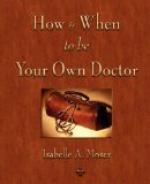Suppose a fast-growing city is having traffic jams. “We don’t like it!” protest the voters. “Why are these problems happening?” asks the city council, trying to look like they are doing something about it.
Experts then proffer answers. “Because there are too many cars,” says the Get A Horse Society. The auto makers suggest it is because there are uncoordinated traffic lights and because almost all the businesses send their employees home at the same time. Easy to fix! And no reason whatsoever to limit the number of cars. The asphalt industry suggests it is because the size and amount of roads is inadequate.
What do we do then? Tax cars severely until few can afford them? Legislate opening and closing hours of businesses to stagger to’ing and fro’ing? Hire a smarter municipal highway engineer to synchronize the traffic lights? Build larger and more efficient streets? Demand that auto companies make cars smaller so more can fit the existing roads? Tax gasoline prohibitively, pass out and give away free bicycles in virtually unlimited quantities while simultaneously building mass rail systems? What? Which?
When we settle on a solution we have simultaneously chosen what we consider the real, underlying cause of the problem. If our chosen reason was the real reason. then our solution results in a real cure. If we picked wrongly, our attempt at solution may result in no cure, or create a worse situation than we had before.
The American Medical Association style of medicine (a philosophy I will henceforth call allopathic) has a model that explains the causes of illness. It suggests that anyone who is sick is a victim. Either they were attacked by a “bad” organism—virus, bacteria, yeast, pollen, cancer cell, etc.—or they have a “bad” organ—liver, kidney, gall bladder, even brain. Or, the victim may also have been cursed by bad genes. In any case, the cause of the disease is not the person and the person is neither responsible for creating their own complaint nor is the victim capable of making it go away. This institutionalized irresponsibility seems useful for both parties to the illness, doctor and patient. The patient is not required to do anything about their complaint except pay (a lot) and obediently follow the instructions of the doctor, submitting unquestioningly to their drugs and surgeries. The physician then acquires a role of being considered vital to the survival of others and thus obtains great status, prestige, authority, and financial remuneration.
Perhaps because the sick person is seen to have been victimized, and it is logically impossible to consider a victimizer as anything but something evil, the physician’s cure is often violent, confrontational. Powerful poisons are used to rejigger body chemistry or to arrest the multiplication of disease bacteria or to suppress symptoms; if it is possible to sustain life without them, “bad,” poorly-functioning organs are cut out.




